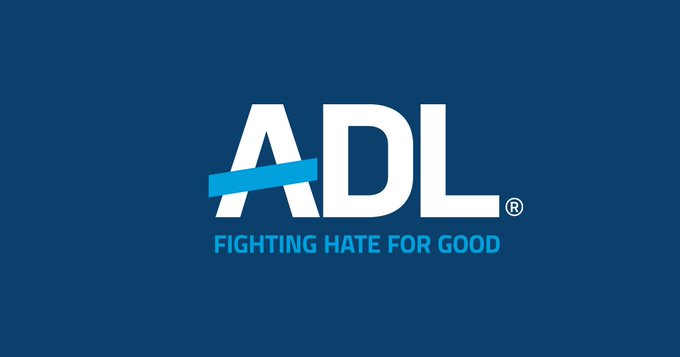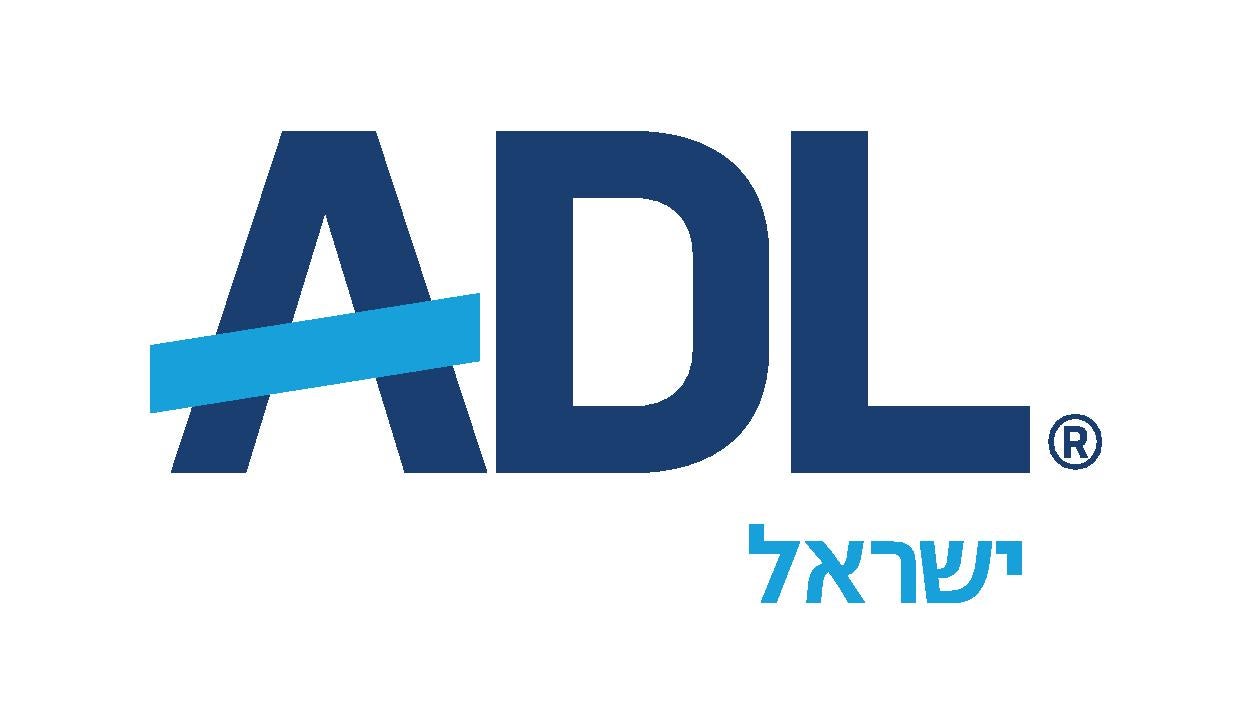
Annual ADL Audit tracks 2,000+ incidents across the U.S., third–highest yearly total on record
New York, NY, April 27, 2021 … Antisemitic incidents remained at a historically high level across the United States in 2020, with a total of 2,024 incidents of assault, harassment and vandalism reported to ADL (the Anti-Defamation League). While antisemitic incidents declined by 4 percent after hitting an all-time high in 2019, last year was still the third-highest year for incidents against American Jews since ADL started tracking such data in 1979.
ADL’s annual Audit of Antisemitic Incidents, issued today on the 2nd anniversary of the deadly white supremacist attack on the Chabad of Poway, California, recorded a total of 1,242 incidents of harassment, an increase of 10 percent from 2019. At the same time, reported acts of vandalism and assault declined by 18 percent and 49 percent, respectively, and there were no antisemitic fatalities reported in 2020.
“While any decline in the data is encouraging, we still experienced a year in which antisemitic acts remained at a disturbingly high level despite lockdowns and other significant changes in our daily lives and interactions with others,” said Jonathan A. Greenblatt, ADL CEO and National Director. “We can’t let our guard down. As communities begin to open up and people spend more time in person with others, we must remain vigilant.”
The year was dramatically impacted by the COVID-19 pandemic, which led in some cases to Jews and other marginalized communities being blamed or scapegoated for spreading the virus. After the pandemic became more widespread starting in March, incidents of antisemitism at schools and colleges dropped precipitously as learning moved online.
This led to an increase in incidents of antisemitic “Zoombombing” – the intentional disruption of live videoconferences. In 2020, ADL recorded 196 incidents of antisemitic videoconferencing attacks. Of those incidents, 114 targeted Jewish institutions such as schools and synagogues.
Major Findings:
In 2020, ADL counted a total of 2,024 antisemitic incidents across the U.S., a 4 percent decline from the 2,107 incidents recorded in 2019. ADL’s Audit classifies all incidents into three categories: assault, harassment, and vandalism. Of the total incidents reported in 2020:
- Harassment: There were 1,242 harassment incidents, cases where one or more Jews reported having been harassed by antisemitic language or actions. Acts of harassment increased by 10 percent from 1,127 in 2019.
- Vandalism: There were 751 vandalism incidents, cases where property was damaged in a manner that harmed or intimidated Jews. Swastikas, which are generally interpreted as symbols of antisemitic hatred in this context, were present in 517 of these incidents. Acts of antisemitic vandalism decreased 18 percent, from 919 incidents in 2019.
- Assault: There were 31 assault incidents, cases where individuals were physically targeted with violence accompanied by evidence of antisemitic animus. Antisemitic assault decreased by 49 percent from 61 incidents in 2019. The assaults involved a total of 41 victims. No antisemitic fatalities were reported for the first year since 2017.
Incidents were reported in 47 states as well as the District of Columbia. The states with the highest numbers of incidents were New York: 336, New Jersey: 295, California: 289, Florida: 127 and Pennsylvania: 101. Combined, these states account for nearly 57 percent of the total number of incidents.
ADL’s Center on Extremism has gathered the complete 2020 data, as well as data from the previous two years, on ADL’s H.E.A.T. Map, an interactive online tool that allows users to geographically chart antisemitic incidents and events nationally and regionally.
In 2020, there were 327 reported incidents at Jewish institutions such as synagogues, Jewish community centers and Jewish schools, an increase of 40 percent from 234 in 2019. Of that total, 264 were incidents of harassment, 61 were incidents of vandalism and 3 were incidents of assault.
ADL’s Audit recorded 331 antisemitic incidents attributed to known extremist groups or individuals inspired by extremist ideology. This represents 16 percent of the total number of incidents. White supremacist groups were responsible for 277 antisemitic propaganda distributions. Other extremist activity included provocations by the Goyim Defense League, a loose network of individuals connected by their virulent antisemitism.
A total of 178 antisemitic incidents in 2020 involved references to Israel or Zionism, compared to 175 in 2019. Of those, 38 appeared in the form of white supremacist propaganda efforts, which attempt to foment anti-Israel and antisemitic beliefs.
In January and February, antisemitic incidents in schools, colleges, and universities were reported at significantly higher levels than they were during the same period in 2019. Those numbers dropped precipitously as educational institutions across the nation switched to remote learning.
“There was a marked decline of school-based incidents after March, when nearly all schools moved to fully remote learning, so the pandemic definitely played a role in shifting how and where antisemitism manifested in 2020,” Greenblatt said. “This was offset to some degree by the high number of Zoombombing incidents targeting Jewish people and other marginalized communities.”
The Audit offers a snapshot of one of the ways American Jews encounter antisemitism, but a full understanding of antisemitism in the U.S. requires other forms of analysis as well, including but not limited to public opinion polling, assessments of online antisemitism, and examinations of extremist activity, all of which ADL offers in other reports, such as ADL Global 100, Online Hate and Harassment: The American Experience, Survey on Jewish Americans’ Experiences with Antisemitism, Murder and Extremism in the United States in 2020, and the ADL Survey of American Attitudes Toward Jews.
How ADL is Responding
ADL has a comprehensive approach to addressing antisemitic incidents and behavior. This includes prevention efforts through youth education as well as working to enact laws that will improve federal, state and local prevention tactics and response to antisemitic hate crimes and all forms of hate violence.
ADL also partners with law enforcement to raise awareness of extremist threats and help law enforcement professionals recognize and disrupt potential threats. ADL likewise provides education and training every day to students, reaching young people at a time when they are most vulnerable to bullying and social pressures. ADL works with victims and universities to respond to antisemitic harassment and other worrying incidents on college campuses. Finally, ADL’s No Place for Hate and Words to Action programs teach understanding and promote inclusivity in schools and on campuses, respectively.
In response to the historic rise in antisemitic incidents over the past four years, ADL has made the following policy recommendations:
- Public officials and civic leaders — from the President, to governors, attorneys general, mayors, other civic leaders, and law enforcement authorities — should use their bully pulpits to speak out against antisemitism and all forms of hate and extremism.
- Federal, state, and local authorities should provide funding for security hardening and enhancements for at-risk houses of worship, schools, community centers, and other non-profit institutions. At a time of increased attention to white supremacy, antisemitism, extremist and hate-motivated violence, the federal government and states should significantly increase the Non-Profit Security Grant program funding and institutional security training and outreach.
- Governments should provide law enforcement officials with the tools and guidance they need to prevent and effectively identify, investigate and respond to hate crimes, while providing trauma-informed comfort and assistance to individual victims and community members. Additionally, law enforcement agencies should use data from the FBI, Department of Education, and NGOs such ADL and Stop AAPI Hate to anticipate where hate incidents are most likely to occur and to proactively contact community members and institutions to strengthen relationships and collaboration.
- Congress should give the Justice Department the tools it needs to support law enforcement agencies in strengthening their practices and capacity to investigate and report on hate crimes by enacting the Jabara-Heyer NO HATE Act. Congress can advance its goals by requesting an accounting from the Attorney General of law enforcement agencies’ hate crime reporting practices, and by directing state and local law enforcement assistance to programs and efforts that improve hate crime investigation, record-keeping and reporting.
- School districts should promote anti-bias, bullying prevention and Holocaust and genocide education programs in elementary and secondary schools. University leadership should respond firmly and forcefully to antisemitic acts on college campuses, including incidents that target Jewish students because of their actual or perceived support of the state of Israel.
- In response to the rising threat of domestic extremism in the wake of the Jan. 6 insurrection at our nation’s Capitol, ADL recently created the PROTECT plan, which outlines a comprehensive, bipartisan approach to address this pernicious threat.
The ADL Audit includes both criminal and non-criminal acts of harassment and intimidation, including distribution of hate propaganda, threats and slurs, as well as vandalism and assault. Compiled using information provided by victims, law enforcement and community leaders, and evaluated by ADL’s professional staff, the Audit provides a regular snapshot of one specific aspect of a nationwide problem while identifying possible trends or changes in the types of activity reported. This information assists ADL in developing and enhancing its programs to counter and prevent the spread of antisemitism and other forms of bigotry.
The Audit of Antisemitic Incidents is a project of ADL’s Center on Extremism, whose work is supported in part by the following generous donors as well as numerous others: The ADL Lewy Family Institute for Combating Antisemitism, Anonymous, Roman Abramovich, Catena Foundation, Charles and Mildred Schnurmacher Foundation, Crown Family Philanthropies, David Berg Foundation, Joyce and Irving Goldman Family Foundation, Lillian and Larry Goodman Foundations, The Marlene Nathan Meyerson Family Foundation, The Nancy K. Silverman Foundation, Nathan Cummings Foundation, New England Revolution Foundation, Quadrivium Foundation, Zegar Family Foundation.
ADL is a leading anti-hate organization. Founded in 1913 in response to an escalating climate of antisemitism and bigotry, its timeless mission is to protect the Jewish people and to secure justice and fair treatment for all. Today, ADL continues to fight all forms of hate with the same vigor and passion. ADL is the first call when acts of antisemitism occur. A global leader in exposing extremism, delivering anti-bias education and fighting hate online, ADL’s ultimate goal is a world in which no group or individual suffers from bias, discrimination or hate. More at www.adl.org.

